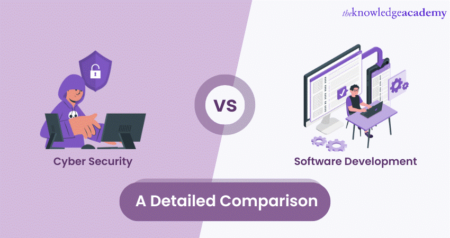
Cybersecurity Software Development: Overview
Cybersecurity software development involves creating software solutions that are specifically designed to protect computers, networks, and data from cyber threats. This encompasses various practices, methodologies, and technologies aimed at securing applications and infrastructure. Here’s an overview of the key aspects:
1. Goals of Cybersecurity Software Development
- Protection Against Threats: To safeguard systems from unauthorized access, data breaches, malware, and other cyber threats.
- Ensuring Integrity and Availability: To maintain the integrity and availability of data and systems, ensuring that they function correctly and data remains unaltered.
- Compliance with Regulations: To ensure that software complies with relevant laws and regulations concerning data protection and cybersecurity.
2. Key Components
a. Secure Software Development Lifecycle (SDLC)
The Secure SDLC integrates security into every phase of the software development process:
- Requirements Gathering: Identify security requirements alongside functional requirements.
- Design: Incorporate security architecture and design patterns to address potential threats.
- Development: Apply secure coding practices to prevent vulnerabilities.
- Testing: Perform security testing, including static and dynamic analysis.
- Deployment: Ensure secure deployment practices are followed.
- Maintenance: Regularly update the software to patch vulnerabilities and improve security.
b. Secure Coding Practices
- Input Validation: Ensure that all input data is validated to prevent common attacks like SQL injection and XSS.
- Authentication: Implement strong authentication mechanisms, such as multi-factor authentication (MFA).
- Authorization: Apply the principle of least privilege, ensuring users only have access to what they need.
3. Tools and Technologies
- Development Frameworks: Use frameworks with built-in security features (e.g., Django, Spring Security).
- Testing Tools: Utilize tools like SonarQube for static code analysis and OWASP ZAP for dynamic testing.
- Version Control Systems: Tools like Git for tracking code changes and collaboration.
- Continuous Integration/Continuous Deployment (CI/CD): Automate testing and deployment processes while integrating security checks.
4. Threat Modeling and Risk Assessment
- Threat Modeling: Identifying and evaluating potential threats and vulnerabilities in the software design phase.
- Risk Assessment: Analyzing the potential impact of identified threats and determining appropriate mitigation strategies.
5. Best Practices
- Code Reviews: Regularly review code to identify vulnerabilities and improve quality.
- Training: Provide developers with ongoing training on secure coding practices and emerging threats.
- Documentation: Maintain clear documentation of security policies, procedures, and software designs.
Conclusion
Cybersecurity software development is essential for building secure applications that can withstand cyber threats. By following secure development practices, leveraging the right tools, and fostering a culture of security awareness, organizations can significantly reduce their risk of cyber incidents.
If you meant something different by “wbsoftwarement” or have other specific questions about cybersecurity, please clarify, and I’ll be happy to assist!
